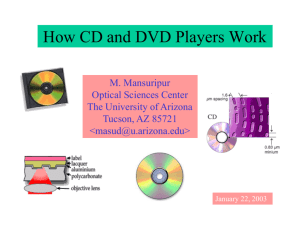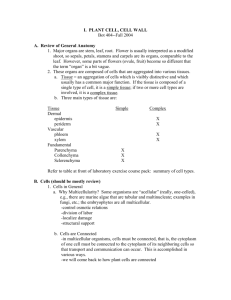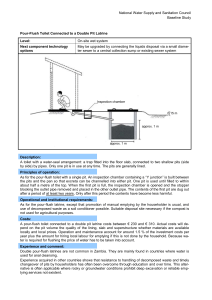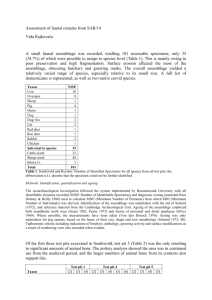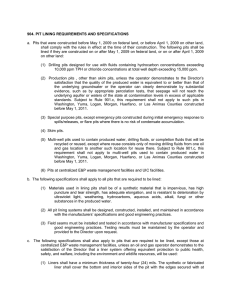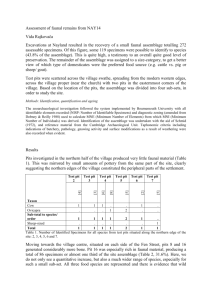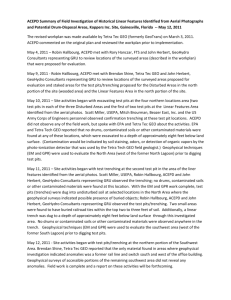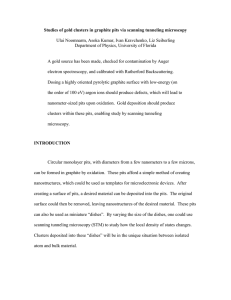Storage Devices
advertisement
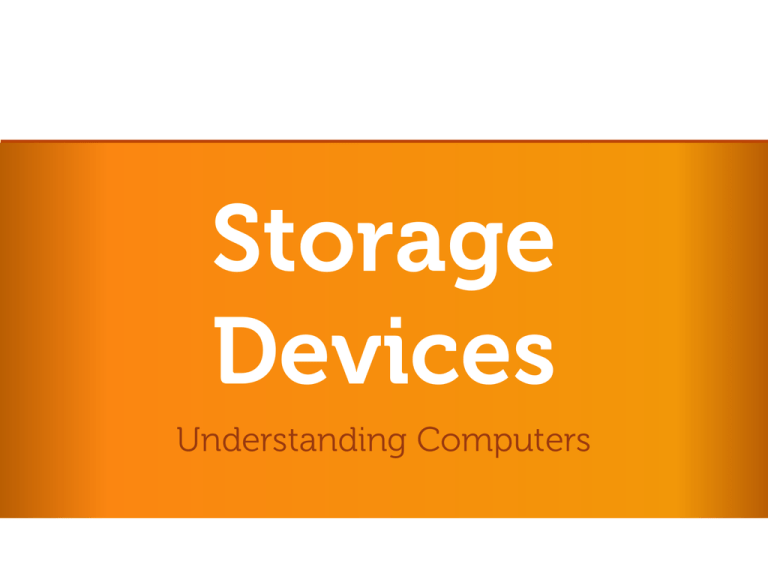
Storage Devices Understanding Computers Understanding Computers Storage Devices Learning Objectives • State the typical capacities, strengths and weaknesses of different storage devices • Describe how data is stored on a CD • Describe how 0s and 1s are represented by pits and lands on a CD • Name three types of optical storage device Understanding Computers Storage Devices Starter Activity Understanding Computers Storage Devices Data Units Name Bit Byte Kilobyte Megabyte Gigabyte Terrabyte Equal to 1 bit 8 bits 1,024 bytes 1,024 kilobytes 1,024 megabytes 1,024 gigabytes Size in Bytes 1/8 1 1,024 1,048,576 1,073,741,824 1,099,511,627,776 Understanding Computers Storage Devices Storage Units Name Byte What can it store? A single letter, like "A." Kilobyte Megabyte Gigabyte A 14-line e-mail. A pretty lengthy paragraph of text. A good sized novel. Roughly 300 MP3s or 40 minutes of video at DVD quality. A CD holds about three quarters of a gigabyte. 1,000 copies of the Encyclopedia Britannica. Statistically, the average person has spoken about this much by age 25! Terrabyte Understanding Computers Storage Devices Optical Media • • • • CDs, DVDs, Blu Ray Disks Some are read only Some you can burn new data onto Some you can re-use over and over again with new data Understanding Computers Storage Devices Reading and Writing to a CD-ROM • Powerful laser ‘burns’ disk surface • Laser ‘burns’ pits into surface • Weak laser reads surface • Detector measures reflected light Understanding Computers Storage Devices Tracks on a CD • A CD has one long track on it full of Pits and Lands. • This tracks begins at the centre of the disk and work outwards in a tight spiral. Understanding Computers Storage Devices ‘Burning’ a CD-ROM • Pits and Lands are used to represent 1s and 0s in Binary. • Lasers shine light at the surface and light is reflected from the silver surface of the disk – except where a Pit begins or ends. Here the reflection is scattered and a 1 is read – Good reflection / Poor reflection – On / Off – 1/0 • A pattern of 1s and 0s can make a word using ASCII, therefore you can store a word using a series of Pits and Lands ‘burnt’ into the disk. Understanding Computers Storage Devices Pits and lands • All Optical media (CD, DVD, Blu-Ray etc.) have pits and lands • These are microscopic and represent the binary information of the data stored on the disc • A CD is reflective and reflects the laser into a sensor to register it as a 0, but when the light hits the beginning or end of a pit, it scatters with little reflection, and a 1 is registered Understanding Computers Storage Devices How a CD-ROM is read Top of CD ROM Disk Change Pit Change Change Land Land Pit Land Bottom of CD ROM Disk Reflected Light Laser Light Sensor • Data is encoded onto the CD using a series of ‘Pits' and ‘Lands‘. • A change from a Pit to a Land is read as a 1 and no change or a Land is read as a 0. • In this figure, it will read as: 01001010 • Remember Your ASCII! • Therefore 01001010 = 74 = Letter J • 8 Bits = 1 Byte = 1 Character of Text Understanding Computers Storage Devices The Surface of a CD-ROM • Microscopic view of the surface of a CD ROM. Understanding Computers Storage Devices Activity • Complete Worksheet 7-8 Reading from a CD. • Use Worksheet 7-5 ASCII Codes sheet to help you convert your readings into text. Understanding Computers Storage Devices Recap • Name at least three types of Optical storage device. • How is data written to a CD? • How are zeros and one represented on a CD? • How might a Hard Disk store data?
